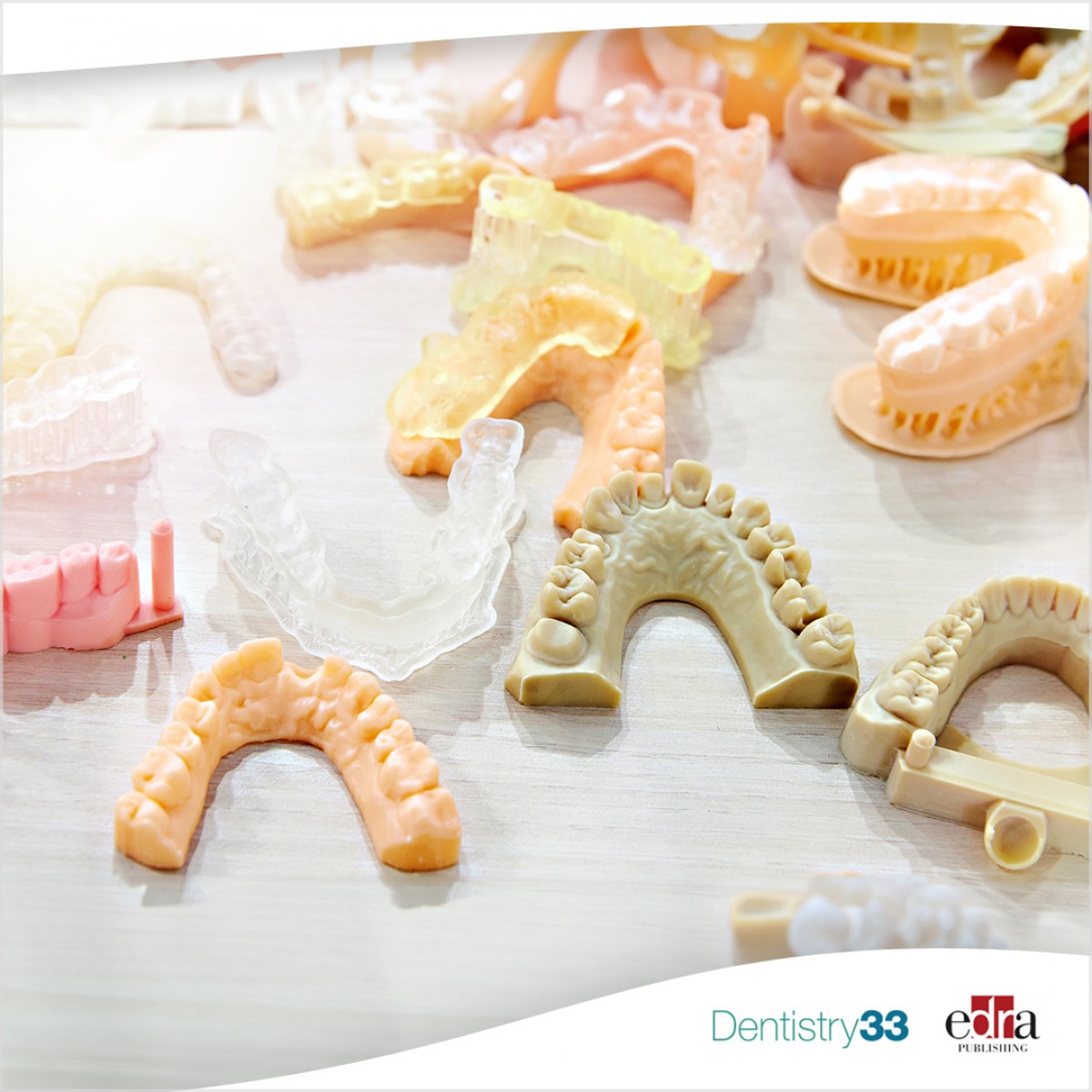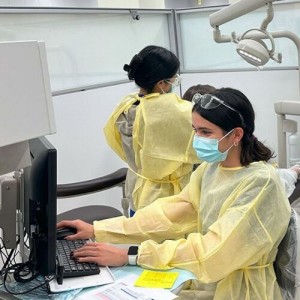
Evaluation of wear resistance opposing zirconia: 3D printed vs. prefabricated denture teeth Introduction
Lorenzo Breschi
Zirconia (ZrO2) is currently one of the most used and promising restorative materials in dentistry due to its excellent mechanical properties, good biocompatibility and satisfying aesthetic properties. However, due to its high strength and hardness, a variable degree of wear of restorative materials can be observed when present in the antagonist arch to zirconia restorations during occlusion.
The wear of dental materials is a complex process and, ideally, it should match that of natural enamel. In this respect, prefabricated acrylic resin denture teeth demonstrated a more biomimetic wear pattern compared to ceramic denture teeth, even though they still need to be improved. Some attempts have been made to enhance their wear properties by incorporating various cross-linking agents and organic and inorganic fillers. Additionally, the recent introduction of three-dimensional (3D) printed resin has opened up new possibilities.
In this regard, Pham et al. have conducted an in vitro study to evaluate the wear resistance of a recently developed 3D printed denture teeth resin compared to three commercially available prefabricated denture teeth when opposed to zirconia.
Materials and methods
The study involved the evaluation of 88 maxillary first molar denture teeth, divided into four groups: C (n=24; Classic; Dentsply Sirona, York, PA), DCL (n=20; SR Postaris DCL; Ivoclar Vivadent, Schaan, Liechtenstein), IPN (n=20; Portrait IPN; Dentsply Sirona, York, PA) and F (n=24; Denture Teeth A2 Resin 1 L; Formlabs, Somerville, MA). Groups C, DCL and IPN were commercially available prefabricated denture teeth, while group F consisted of 3D printed denture tooth specimens fabricated from a methacrylate-based photopolymerizing resin using stereolithography (SLA).
All denture teeth specimens were subjected to a three-body wear simulation with a PMMA abrasive slurry. The in vitro wear test was conducted with a four station Leinfelder-style apparatus with monolithic zirconia antagonist bullet-shaped styli. A load force of 36–40 N at 1.7 Hz was applied for 200,000 cycles. The maximum depth of wear was measured using a lab grade scanner, accurate to 7 μm, and analyzed with a software program. Data underwent statistical analysis (p<0.001).
Results
The one-way ANOVA revealed that different denture tooth materials significantly influenced the depth of wear (p<0.001). Notably, the mean vertical depth of wear for the 3D printed denture teeth (0.016 ± 0.010 mm) was statistically less than the prefabricated denture teeth (p<0.001) Furthermore, the highly cross-linked denture teeth, DCL (0.036 ± 0.011 mm) and IPN (0.035 ± 0.014 mm), exhibited a significantly higher wear resistance compared with the conventional acrylic denture teeth (0.058 ± 0.014 mm) (p<0.001), while no significant difference in depth of wear was observed between DCL and IPN (p>0.001).
Conclusion
Within the limitations of this in vitro study, the authors concluded that denture tooth material significantly influences the depth of wear when opposed to zirconia. Specifically, the 3D printed denture teeth displayed superior wear resistance in comparison to the commercially available prefabricated denture teeth.
For more information: Pham DM, Gonzalez MD, Ontiveros JC, Kasper FK, Frey GN, Belles DM. Wear Resistance of 3D Printed and Prefabricated Denture Teeth Opposing Zirconia. J Prosthodont. 2021 Dec;30(9):804-810.
 Related articles
Related articles
Restorative dentistry 12 September 2025
Traumatic tooth injuries involve function and aesthetics and cause damage that range from minimal enamel loss to complex fractures involving the pulp tissue and even loss of the tooth crown.
Endodontics 18 August 2025
Factors influencing the long-term results of endodontic treatment: a review of the literature
The purpose of this review of the literature is to examine the factors and their influence on the outcome of endodontic treatments, and also to attempt to have an authors’ consensus concerning the...
Endodontics 12 February 2025
Evaluation of the Role of Probiotics in Endodontic Treatment
The principal goal of endodontics is the prevention of periapical infection. Acute and chronic apical periodontitis occur due to the persistence of pathogenic microorganisms such as Enterococcus...
Oral Hygiene & Prevention 20 December 2024
Oral hygiene evaluation for effective oral care in preventing pneumonia in dentate elderly
The purpose of this study was to establish criteria for the visual evaluation of oral hygiene by analyzing the relationship between status of oral hygiene and number of oral bacteria in saliva for...
Pediatric dentistry 27 June 2024
Intrusion is defined as the axial dislodgment of the tooth into its socket and is considered one of the most severe types of dental trauma.
 Read more
Read more
Editorials 10 October 2025
With proud smiles and crisp white coats, ninety-three learners from the DDS Class of 2029 and the International Dentist Pathway Class of 2028 marked the start of their dental careers at the UCSF...
Periodontology 10 October 2025
Continuous professional development (CPD) in Periodontology refers to the overall framework of opportunities that facilitate a life-long learning practice, driven by the learner-practitioner and...
TheraBreath, the #1 alcohol-free mouthwash brand in the U.S.*, has introduced a new line of dentist-formulated, clinically tested toothpastes designed to support professional oral care...
News 10 October 2025
New officers and trustees were installed at the Minnesota Dental Association’s Leadership Conference on September 19 in Minneapolis.
News 10 October 2025
Smartee Denti-Technology today announced that Professor Gang Shen, its Chief Scientist and Executive President of TaiKang ByBo Dental, has once again been named to the World’s Top 2% Scientists...















